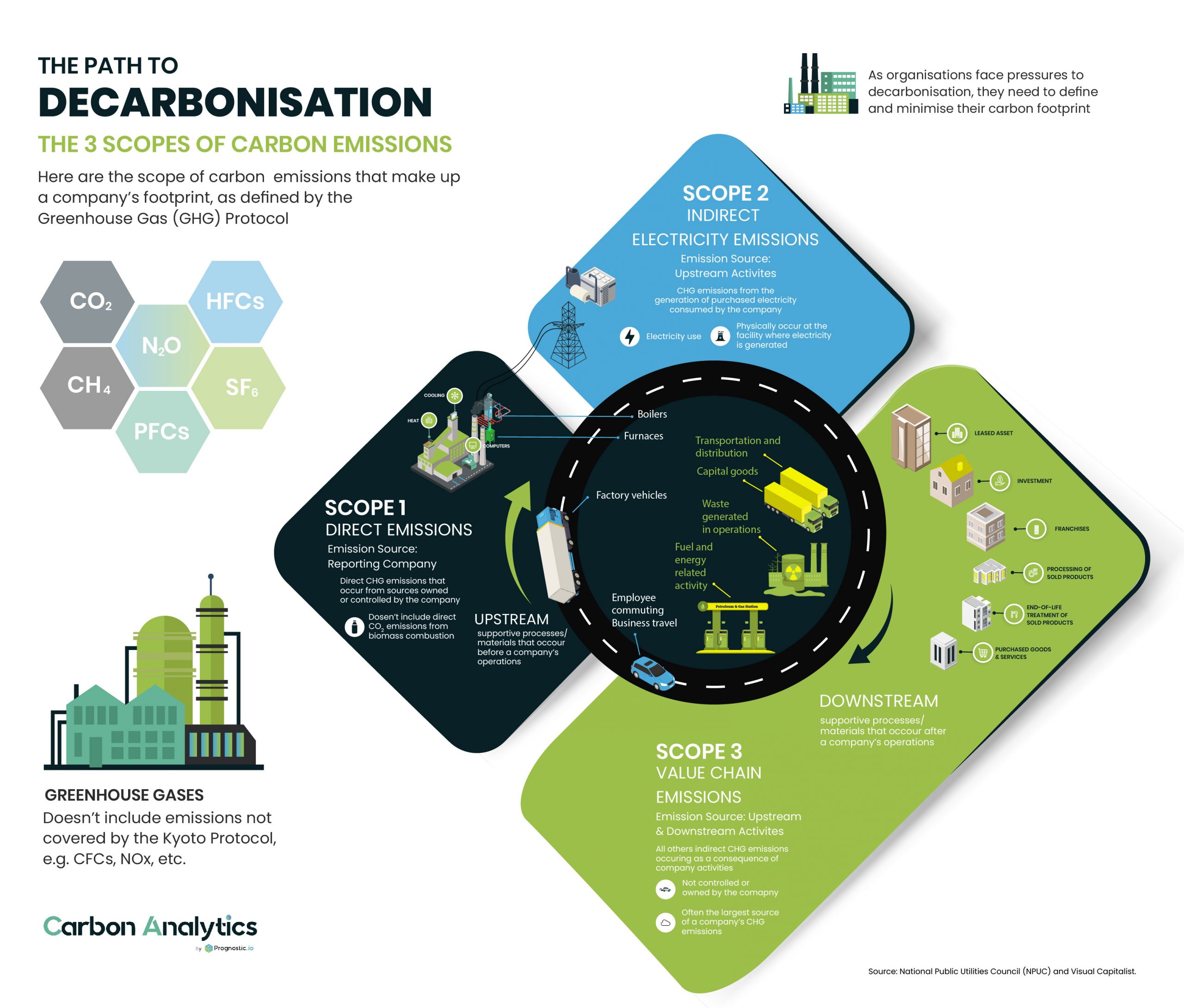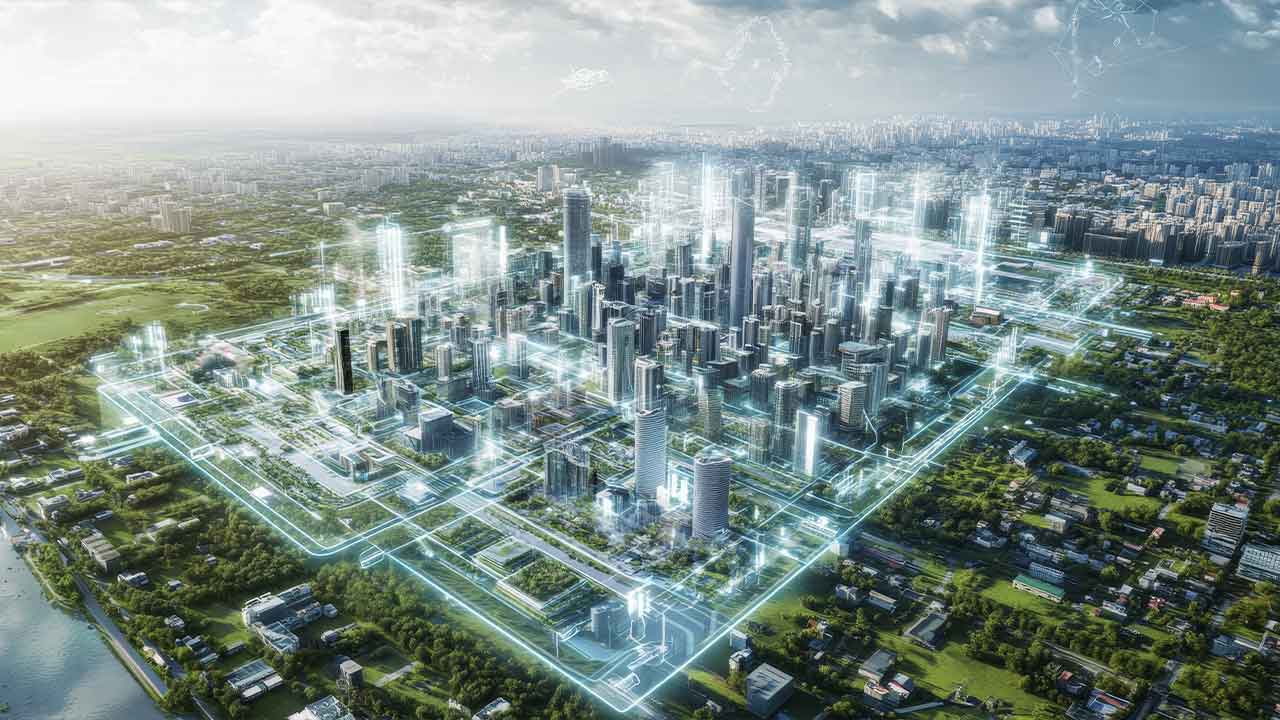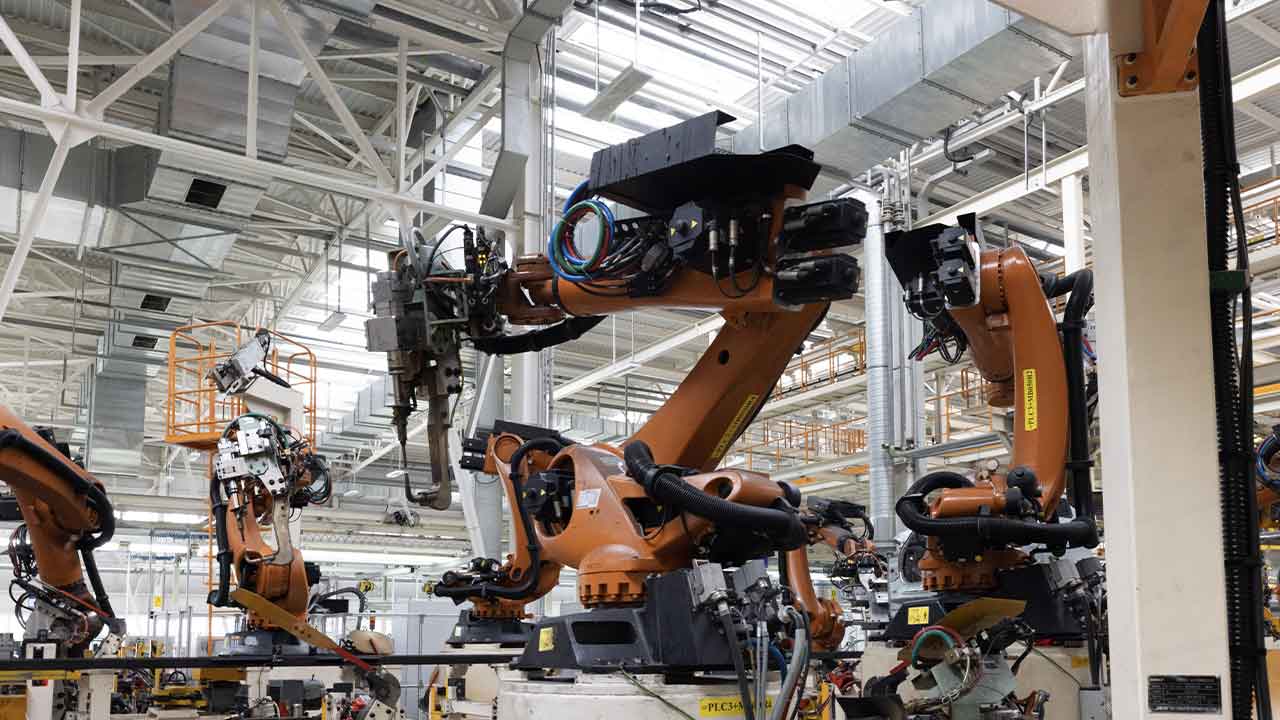Why should Scope 3 be the big focus to achieve sustainability goals?
At the industrial and domestic scale, both direct and indirect emission constitutes the contaminated carbon particles that will ultimately lead to atmospheric pollution i.e. most commonly known as greenhouse gases (GHG’s). Direct emission is concerned with the fuel-burning byproducts that will depend upon the fuel used for energy production and indirect emission involves pollution production from production to consumer (Scott, Roelich, Owen, & Barrett, 2018). Direct and indirect emission served as the core component of measuring or implementation strategies that keenly focused on pollution reduction using more innovative technologies (Hoekstra & Wiedmann, 2014).
The emissions for ease of understanding are categorized into three different scopes based on emissions. Scope 1 emission regards to the direct emission from organization resulting in fuel burning for energy production or we can say that direct emissions from owned assets, scope 2 corresponds to emission related to electricity and fuel or indirect emission from purchased energy while scope 3 (indirect emissions from actions that take place throughout the value chain of the business) emissions related to non-electrical and combustion-related sources included in Scopes 1 and 2, and then also conceivably associated pollution related to the usage of items sold as well as the traveling of personnel (Hertwich & Wood, 2018).

In the fifth report, scope 3 is considered first time as a national carbon-based emission concern over the intergovernmental panel on climate change (IPCC), when it comes to emission the production and consumption-based constituent must be well separated to have a better understanding over scope 3 (Edenhofer, 2015). Consumption-based items constitute the emission from the countries where the product is manufactured leading the consumer that can reside worldwide. IPCC in its assessments that include scope 3 based on the innovative technologies such as multi-regional input-output model (MRIOs) (Edenhofer, 2015), the same model has been implemented over the water (Lenzen et al., 2013), material based synthesized products (Wiedmann et al., 2015), land usage (Lenzen et al., 2013), forestry threats and several other symptoms that comes within terms of carbon footprints.
Concerning scope 1 and 2 with scope 3, it’s clear that scope 1 is enough to understand major pollution causes but also including scope 3 will give oversight for the use of electricity and steel. Considering scope 2 and 3 will help to reduce the pollution that’s generated through electricity and steel with efficient methods of replacing the input with those resources that lead to a reduction in the emission of such contaminated particles leading to carbon-based pollution. As per various researches finding the scope 3 addresses the emission concern over the inputs, with downstream emission related to the use of the products also such emission relates to the reduction in the number of employees (Bhatia et al., 2011).
For instance, take Shanghai, the most developed city in China, where massive electricity demands that need to be bought from nearby provinces to fulfill the regional needs. Carbon emission associated with electricity is proportional to net use throughout the regions, for this reason, scope 2 is the more prominent reason over scope 1. Regional trade, thought to be one of the most impactful factors for reducing the scope 3 emission, scope 2, and scope 3, will be equal if no regional trading occurs. For satisfying the local need, Shanghai has the regional product to buy and while withdrawing the buying outside the region that is ultimately a core reason for scope 3 emission. As per the researches, the shanghai average scope 3 emission was 2.65 times above the national recorded average in 2007, 2.18 times as compared to the national average, and 1.45 times the national average in 2012. Regional scope 3 emission had a strong association with the electricity flow on a regional scale while scope 2 was associated with the electricity distribution by grids (Wei et al., 2020).
From 1995 to 2015 the 83% growth for scope 3 carbon containment has been recorded with association towards the supply chain of all concerned industrial sectors. This rapid research growth in the field of indirect emission showing the product in the intermediary phase largely influences the emission causes than in the manufacturing phase; that’s all due to increased supply chain importance. As per the statistical analysis of IPCC, 37 Pg. indirect emissions were recorded while ranging the industries from slaughterhouse to the tourism sector, while construction sector recorded to 10 Pg. which is three times greater than direct emission. Also, agriculture, forestry, and other land use (AFOLU) reported scope 3 emissions were recorded to be three times more than scope 1 while including the methane and nitrogen oxide gases (Hertwich & Wood, 2018).
Scope 2 and scope 3 increased from 78% to 84% and that increase was associated with innovative technological energy transportation, from 1995 to 2015. Scope 3 emissions increased concerning various sectors as the industrial sector, transportation, and also energy production sector. Scope 3 increases mostly in developing nations, specifically China’s industrial sectors whereas a similar proportion is also observed in Brazil, that most possibility associated with infrastructural growth worldwide (Hertwich & Wood, 2018). Find out more about our journey to become carbon neutral.
Logical Implication
- For transportation, the outputs of the automobile-related roadway are similar in the concept to what is now the shift to the electric car having regards to the production of petroleum-based cars and batteries. High-speed railways show significant building effects. Since the influence distribution differs across technology, while weighing alternatives, it is vital to take into account all consequences. The failure takes into account scope 3 could result in the rise of technology that doesn’t significantly overestimate emissions (Chang & Kendall, 2011).
- Scope 3 was greater than the emission of scope 2 for home and building and might not be more difficult to prevent, decarbonization of electricity would reduce the electric induced emissions, although does little to eliminate concrete and metal or intensive electrical operations throughout construction. Whereas the IPCC-WGIII reports construction sectors were leading in tackling scope 2 emissions, scope 3 emissions levels received very minimally (Lucon et al., 2014).
- A survey of the industrial category explains that something that offers a comprehensive overview of the broad spectrum of industry, spanning a fundamental resources extraction to manufacturing and construction but concentrates its attention on chemical and emission standards business. Furthermore, the overview appropriates method emission and neglects the impact of serious structural changes in the market. Products that considerably impact the carbon footprint of consumption are particularly poorly taken into account (Edenhofer, 2015).
- In the AR5 for electric generation resources, scope 3 emissions related to the construction of power infrastructure have been considered and are currently getting summarized. There is no likelihood that high scope 3 emission will be revealed for these other parts of the power grid (Edenhofer, 2015).
References
Bhatia, P., Cummis, C., Rich, D., Draucker, L., Lahd, H., & Brown, A. (2011). Greenhouse gas protocol corporate value chain (scope 3) accounting and reporting standard.
Chang, B., & Kendall, A. (2011). Life cycle greenhouse gas assessment of infrastructure construction for California’s high-speed rail system. Transportation Research Part D: Transport and Environment, 16(6), 429-434.
Edenhofer, O. (2015). Climate change 2014: mitigation of climate change (Vol. 3): Cambridge University Press.
Hertwich, E. G., & Wood, R. (2018). The growing importance of scope 3 greenhouse gas emissions from industry. Environmental Research Letters, 13(10), 104013.
Hoekstra, A. Y., & Wiedmann, T. O. (2014). Humanity’s unsustainable environmental footprint. Science, 344(6188), 1114-1117.
Lenzen, M., Moran, D., Bhaduri, A., Kanemoto, K., Bekchanov, M., Geschke, A., & Foran, B. (2013). International trade of scarce water. Ecological Economics, 94, 78-85.
Lucon, O., Ürge-Vorsatz, D., Ahmed, A. Z., Akbari, H., Bertoldi, P., Cabeza, L. F., . . . Jiang, Y. (2014). Buildings.
Scott, K., Roelich, K., Owen, A., & Barrett, J. (2018). Extending European energy efficiency standards to include material use: an analysis. Climate policy, 18(5), 627-641.
Wei, W., Zhang, P., Yao, M., Xue, M., Miao, J., Liu, B., & Wang, F. (2020). Multi-scope electricity-related carbon emissions accounting: A case study of Shanghai. Journal of Cleaner Production, 252, 119789.
Wiedmann, T. O., Schandl, H., Lenzen, M., Moran, D., Suh, S., West, J., & Kanemoto, K. (2015). The material footprint of nations. Proceedings of the national academy of sciences, 112(20), 6271-6276.
About the author
This article was written by Shravane Balabasqer, Founder & CEO at Carbon Analytics and originally it was published here.


